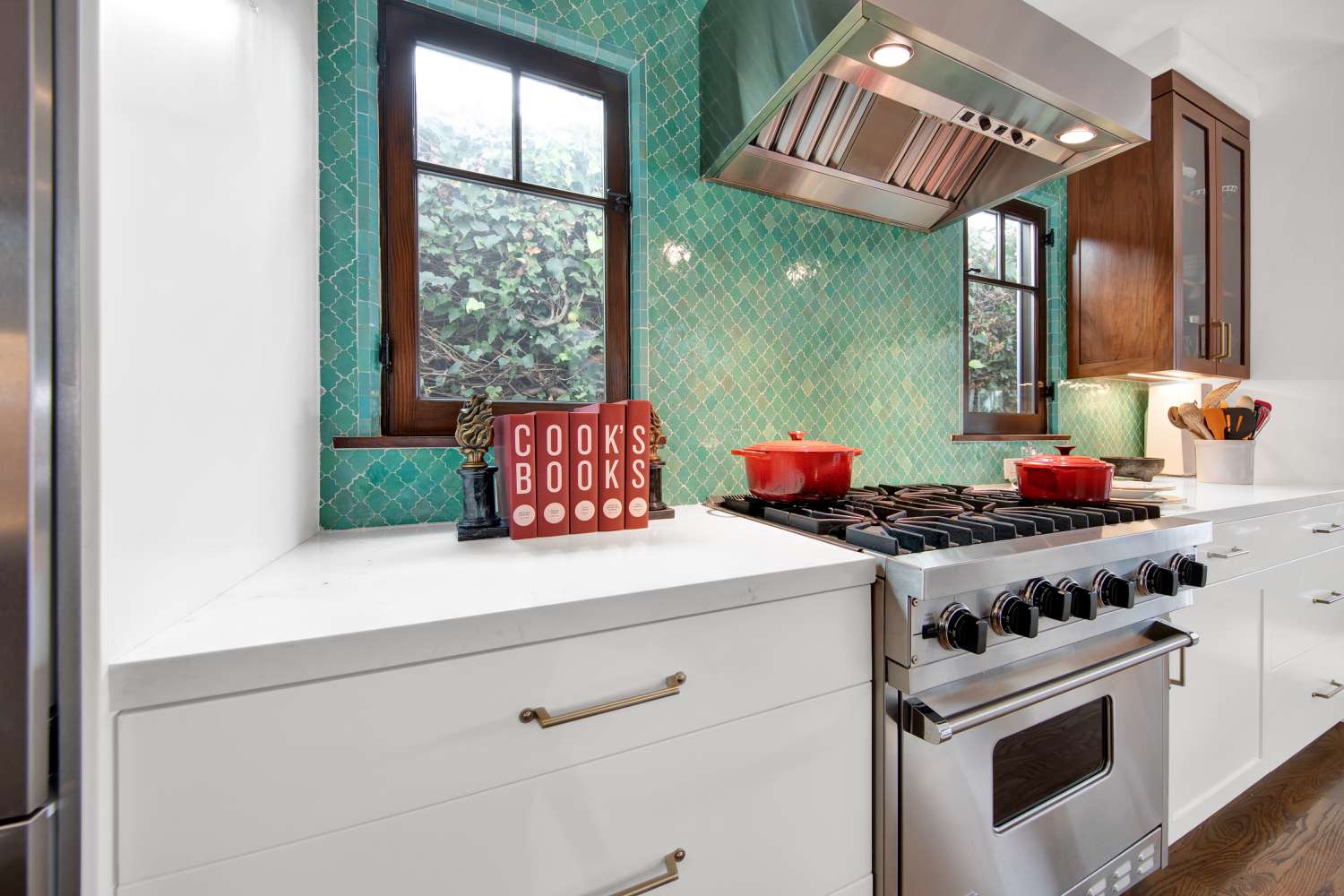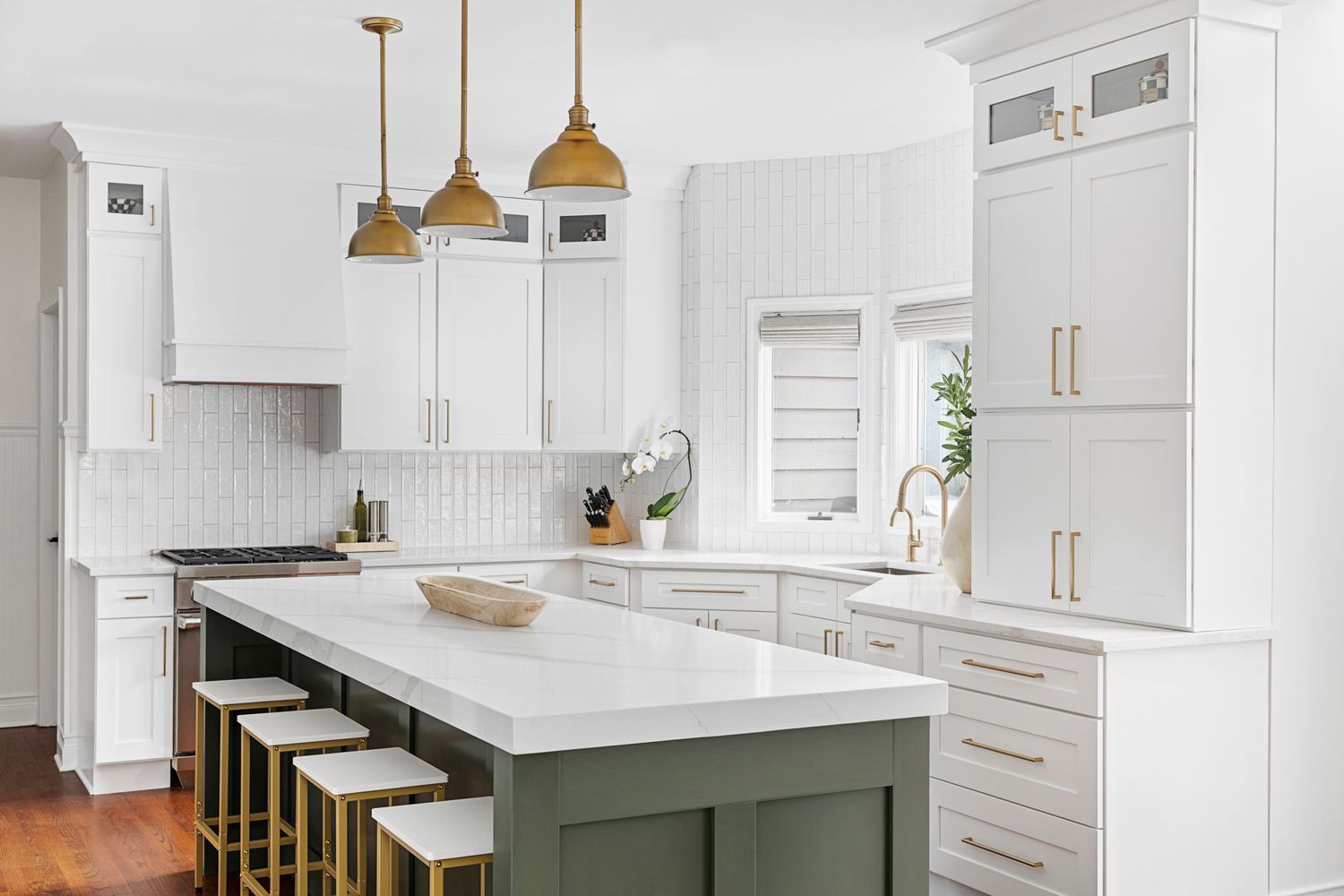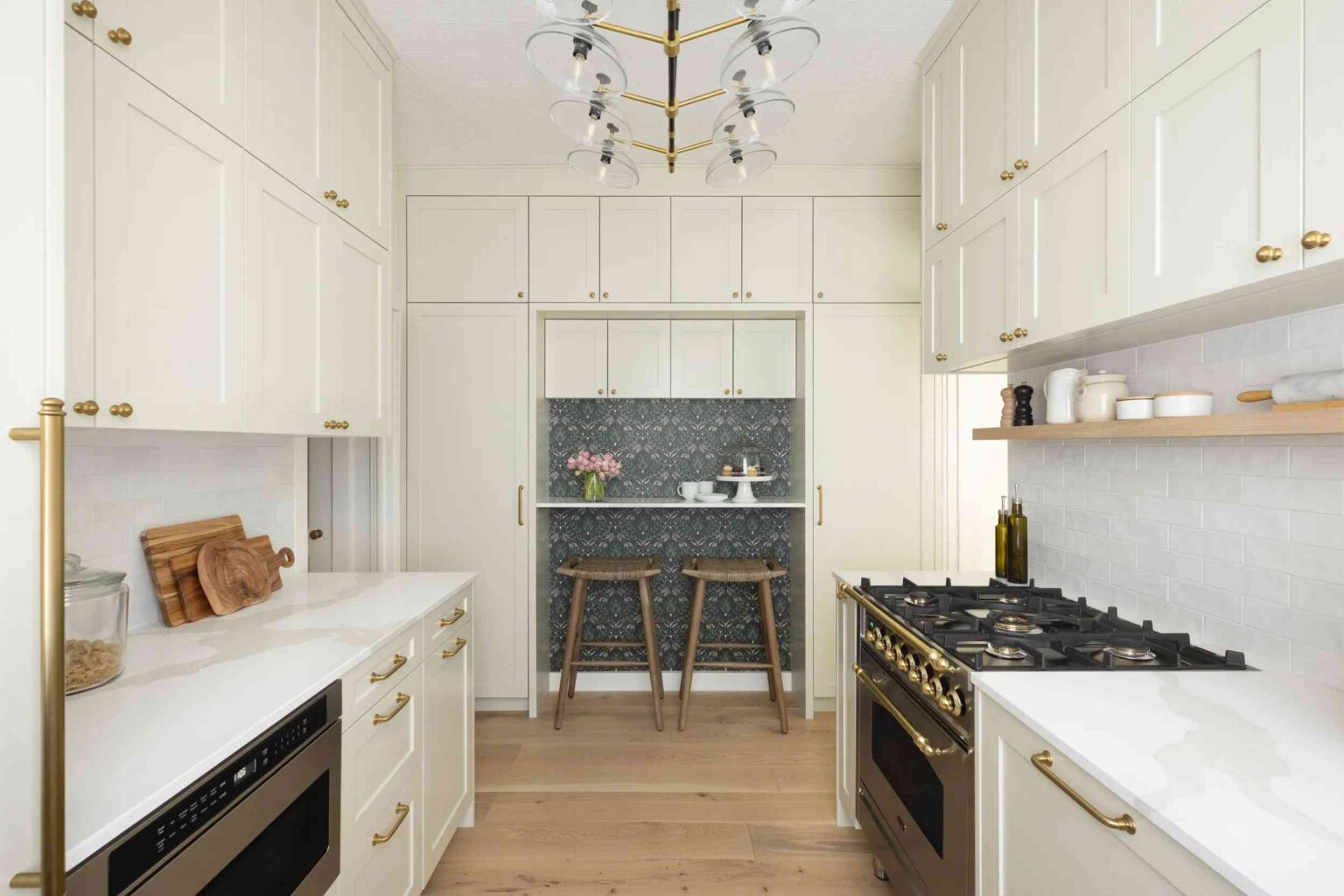Act as a native French speaker and an expert in Home Decoration, who speaks and writes fluently in French. Translate the article below into French. Make sure the translation is linguistically accurate, and conveying the meaning, facts and figures of the original text. Ensure the content is engaging and culturally appropriate for French readers. Don’t talk about Yourself or Your Experience. Don’t Self-reference. Don’t explain what you are doing. The article to translate:
Whether you’re contemplating a DIY kitchen makeover or planning to hire a contractor to update the space, you likely have an idea of what aesthetic you’re going for. Just know that, if part of the update is the kitchen backsplash, there’s more that goes into creating the ideal backsplash than just choosing the prettiest or most universal tile or mosaic. We spoke with pros to learn some of the common mistakes they see homeowners making with this central kitchen element.
Not Using Trim

Shannon Ggem Design
Many a homeowner DIYing a kitchen backsplash or just selecting tile for a contractor to pick up and install often choose tiles without thinking about the trim needed to line backsplash borders.
“Most tiles don’t have finished edges, so a trim is needed on the ends of the installation or in window returns,” says Shannon Ggem, NKBA, and principal of Shannon Ggem Design.
Trim is necessary for several reasons, chiefly to protect tile edges from chipping and cracking and for safety as some tile edges can be quite sharp. Some tile collections offer their own trim tiles, but if not, you can search for a closely matching trim tile from retailers, in showrooms, and at home improvement stores in a bullnose (rounded), cove (a concave curve), pencil (cylindrical), flat liner (straight but smoothed out), quarter-round, or chair rail format.
You can also opt for long tile-edging strips, which are typically made of various metals or PVC.
Want more design inspiration? Sign up for our free daily newsletter for the latest decor ideas, designer tips, and more!
Using Unsealed Grout
“Grout on its own is very porous—one of the most porous elements in your home,” says Rebecca Robinson, CKBD, and owner and principal designer of Monarch Lane Interiors.
Such porosity and moisture penetration of course can lead to the two big-bad M-words in a home: mold and mildew. She points out that, unfortunately, people commonly choose grout without realizing that it doesn’t have a sealant mixed in.
However, many brands now offer power grout or sealed grout, albeit at a slightly more expensive price point. Otherwise, you can always consider purchasing a recommended sealer to go with a grout product you already have.
Not Aligning Tiles Properly

Renovation Sells / Photo by Fio Creative
Homeowners often extend backsplash tile to align with the end of the countertop. But really, they should be terminating the backsplash at the end of the upper cabinets to create a visually cleaner design.
“Extending the tile to the edge of the countertop creates an unnecessary jutting out of the tile, rather than a clean-lined edge,” says Briana Gershenzon, chief of design for Renovation Sells.
Selecting the Tile First
If you’re obsessed with kitchen design, it’s pretty tempting to browse tile without thinking about the other materials in the room.
“A general rule of thumb is to pick your countertop material first as this is usually the most costly investment while there’s a wider variety of backsplash options available,” says Denise Sciametta, designer and general manager of retail showrooms for Nemo Tile + Stone.
She suggests shopping for tile with a sample of the counter material in hand, as well as a swatch of the cabinetry color, to make a more informed decision. Also, it’s important to take the tile sample back home to view it in the light of your kitchen as the existing lighting—both natural and powered—can drastically change how the tile hue may appear.
Not Matching the Vein
An aesthetic growing in popularity in kitchens is using the same slab material—whether natural stone, composite surfacing material, or porcelain—for both the countertop and the backsplash. It offers a seamless, more modern look says Sciametta.
But, Ggem points out, a common mistake is not matching the veins in the backsplash portion. Not matching them takes away from the seamless look and visual depth, especially if the slabs are marble (or simulated marble), as marble veining is unique and, at times, more pronounced.
Not Considering Layout Options

Nina Pagonis and Nemo Tile + Stone
People often fail to explore tile layout options, particularly when they figure tried-and-true classic subway tile is the safest bet for resale later on.
“Brick lay or offset is only one way to run a subway tile,” Sciametta says. “A horizontal or vertical stack is more modern while a herringbone layout is also classic.”
Final Thoughts
“Nothing dates a house faster than making selections based on what’s trending, so copying a Pinterest photo exactly is often a mistake,” says Robinson. Instead, she encourages homeowners to try and understand what they love about different inspiration photos and to make a selection based on a common thread.
While white will always remain a classic, Sciametta encourages homeowners to not be afraid of color.
“Color can really pop on a backsplash and tie the whole kitchen together,” she says. “But be sure it’s a color you will love for years to come.”
Lastly, don’t rush, says Robinson.
“A builder might push for a backsplash selection quickly, and then you’re forced to find something in stock. Backsplashes are an investment and pretty permanent, so it’s important to plan ahead.”




